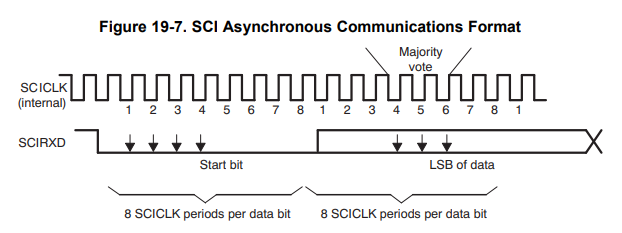Hello,
I am working with the SCI/UART in asynchronous mode. I am continuously transmitting three 16 bit frames (with two 8 bit data packets) . The problem that I encounter is that some packets get lost in the process and the data in the frame thus gets misplaced. How can I work around this issue ?
Also, I do not want to use the idle line mode as the idle bits will significantly delay my communication loop. Use of address bit mode is still a choice but is there a good example to refer too and also is there a way to work around this without the need for the idle line mode or the address bit mode.
Thanks & Regards,
Radha


